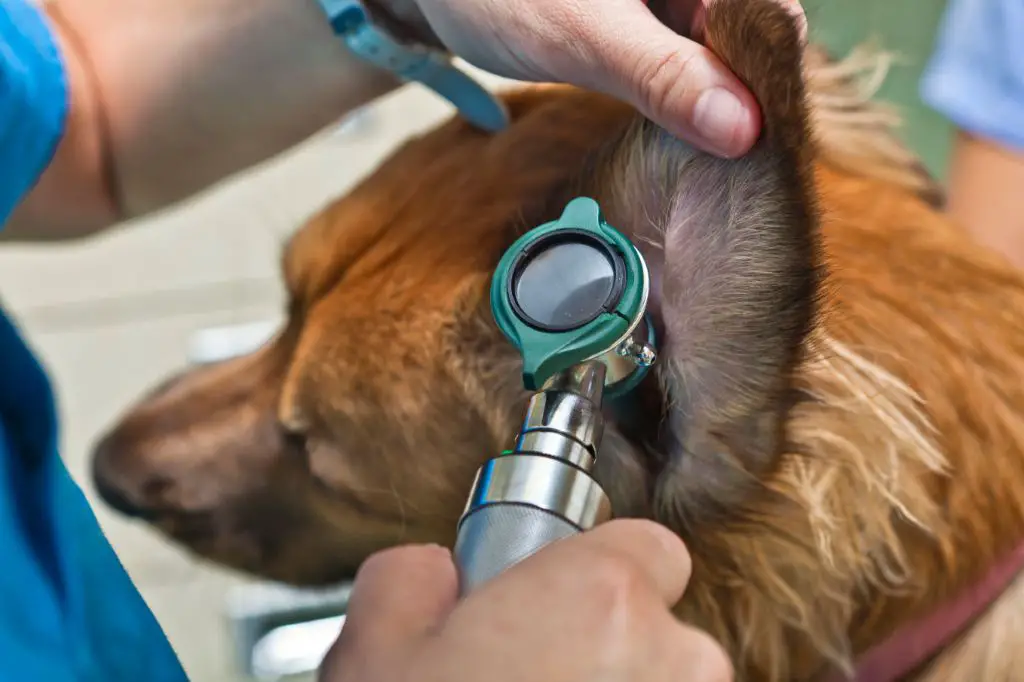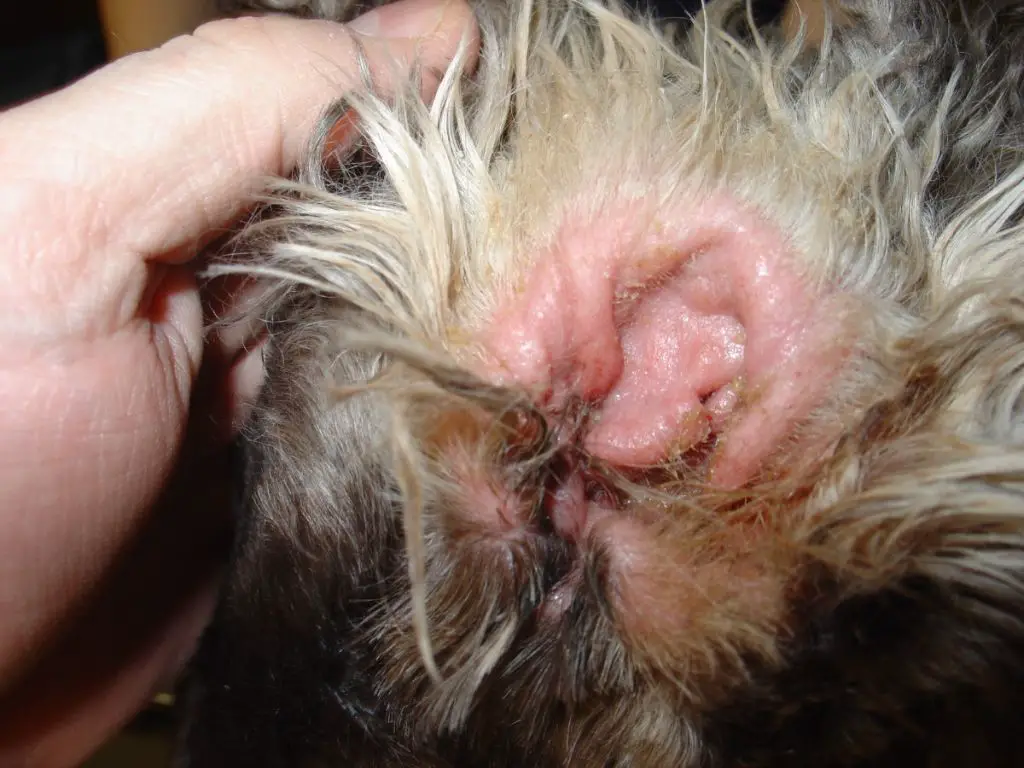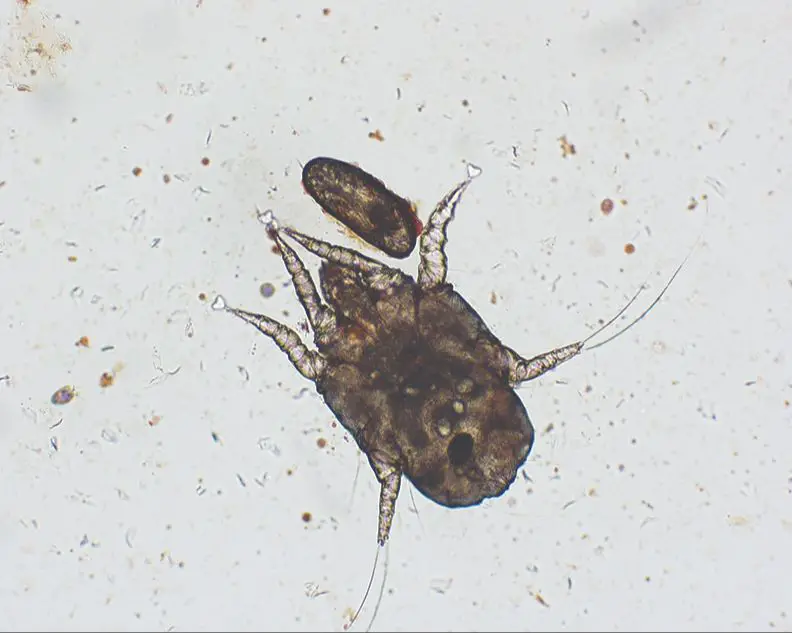Introduction
Ear wax and ear mites are two common conditions that can affect dogs’ ear health. Both can cause irritation, discomfort or infection in your dog’s ears if not properly addressed. While ear wax is a naturally occurring substance, excessive amounts can indicate underlying issues. Ear mites are tiny parasites that feed off wax and debris and can quickly multiply, leading to an infestation.
In this article, we will examine the causes, symptoms and treatments for excess ear wax versus ear mites in dogs. By understanding the difference between these two ear problems, you can better monitor your dog’s health and get the right veterinary care if needed. Information on prevention will also help you promote long-term ear health for your furry friend.

What is Ear Wax?
Ear wax, also known as cerumen, is a substance produced by specialized glands located throughout the ear canal. It is a normal and important part of a healthy ear. Ear wax is designed to lubricate and protect the ear canal.
Ear wax is composed of a mixture of secretions, including oils, dead cells, and substances such as keratin. The exact composition varies from person to person based on genetics, diet, and overall health.
The main purpose of ear wax is to trap dirt and debris and prevent these particles from reaching the eardrum. The wax acts as a protective barrier against water, bacteria, and other microorganisms that may enter the ear. The lubricating properties of ear wax also prevent the ear canal from becoming dry and itchy.
In normal amounts, ear wax is beneficial. But sometimes ear wax can build up and become excessive, leading to blockage and other problems.
Causes of Excessive Ear Wax
There are several factors that can cause a buildup of ear wax in dogs:
Allergies: Allergies to food, medications or environmental factors like pollen or dust mites can cause inflammation and extra ear wax production. The excessive wax is part of the body’s response to irritation.
Genetics: Some dog breeds are genetically prone to producing more ear wax than others. For example, Labradors, Miniature Poodles, Cocker Spaniels and Shar Peis are more likely to have issues with excess ear wax.
Diet: Diet can contribute to ear wax buildup in a couple ways. First, food allergies may cause inflammation as noted above. Second, poor quality or corn-based diets can create more sugars and yeast in the ears, promoting wax production.
Hair Growth: Dogs with heavy hair growth inside their ear canals are more prone to trapping wax inside the canal. This is especially true for breeds like Cocker Spaniels and Poodles who grow hair deep inside their ears.
Symptoms of Excessive Ear Wax
Excessive ear wax buildup can cause several symptoms that dog owners may notice. Some of the most common symptoms include:
Dark or discolored ear wax – Healthy ear wax is typically light brown or yellow. Dark brown or black colored ear wax often signals too much wax buildup.
Bad odor – Excess ear wax can trap moisture, bacteria and other debris inside the ear canal, creating a foul, musty smell.
Head shaking – Dogs will often shake their heads vigorously if they are bothered by an irritation or discomfort in their ears. Excess wax can cause itchiness and irritation that leads to head shaking.
In addition to itchiness and head shaking, dogs with excessive ear wax may also scratch at their ears frequently. Thick wax buildup can be uncomfortable and even mildly painful. Dog owners should monitor for symptoms and see a veterinarian if they think their dog has excessive ear wax.
Treatment for Excessive Ear Wax
There are several ways to treat and remove excessive ear wax buildup:
Cleaning

Gently cleaning the outer ear with a damp washcloth can help remove some excess wax. Be very careful not to push any wax deeper into the ear canal when cleaning. Using an ear wax removal kit with softening drops followed by light irrigation with a rubber bulb syringe can also help flush out excess wax.
Flushing
Ear flushing or irrigation involves using a rubber bulb syringe filled with warm water or a specialized flushing solution to irrigate the ear canal. This can help dissolve and wash away excess wax. Ear flushing should be performed by a doctor or nurse to avoid potential harm to the eardrum.
Medications
Ear wax removal drops can help soften and break up ear wax to make it easier to remove. These drops contain ingredients like carbamide peroxide or glycerin to dissolve wax. Hydrogen peroxide drops may also be prescribed to help remove stubborn wax. It’s important to use wax softening drops as directed and avoid pushing wax deeper into the ear canal.
What are Ear Mites?
Ear mites are tiny parasites called Otodectes cynotis that live in the ear canal and feed on wax and oils. They affect both cats and dogs and are highly contagious. An infestation of ear mites is sometimes called ear canker.
Ear mites are spread through direct contact between animals, as well as contaminated bedding and grooming supplies. The mites crawl inside the ear canal where they mate and lay eggs. The entire life cycle of ear mites is spent inside the ear canal. After mating, female ear mites can lay up to 25 eggs over a three week period. The eggs hatch into larvae after 3-8 days, and go through a nymph stage before maturing into adults in about 8-12 days. Ear mites can survive for 2-3 weeks without a host animal.
An infestation of ear mites leads to intense itching. As the mites move around and feed, they irritate the skin inside the ear canal. The scratching and shaking of the head by an affected animal can cause wounds that get infected. Ear mites spread rapidly between animals in close contact. Dogs with floppy ears tend to be more prone to ear mites.
Symptoms of Ear Mites
Ear mites can cause several irritating symptoms in dogs. The most common signs of an ear mite infestation include:
Intense Itching: The mites move around and feed inside the ear canal, causing severe itching. Dogs will shake their heads and scratch their ears in an attempt to relieve the irritation.
Head Shaking: Persistent head shaking and head tilting is a hallmark sign of ear mites. The dog is trying to dislodge the mites from their ears.
Inflammation: The constant scratching and irritation leads to inflammation and the development of red, swollen, and painful ears. The inflammation worsens as the infestation spreads.
In severe cases, ear mites can cause crusting, hair loss, and bleeding inside the ear canal. Secondary bacterial or yeast infections may also develop as a result of the inflammation and damage to the skin.
If your dog is showing symptoms of head shaking, intense scratching, and irritated ears, ear mites should be suspected. It’s important to get veterinary care to diagnose and treat an infestation.
Diagnosis of Ear Mites
Ear mites can be diagnosed through a thorough ear examination and microscopic evaluation. Vets will use an otoscope to look inside the ear canal for signs of infestation. They will look for the presence of mites, eggs, and debris.

To confirm the diagnosis, the vet may take a sample from the ear canal using a swab. This sample can then be examined under a microscope to look for ear mites, eggs, and mite feces, which have a characteristic gritty appearance. Adult mites may also be visible, appearing as tiny white specs moving around under the microscope.
A veterinarian is best equipped to perform a microscopic ear examination and accurately diagnose an ear mite infestation. They have the proper equipment and expertise to distinguish ear mites from other potential causes of ear problems, such as yeast or bacterial infections.
Treating Ear Mites
There are several methods for effectively treating ear mites in dogs:
Medicated Ear Drops
Veterinarians often prescribe medicated ear drops containing ingredients like pyrethrins, ceruminolytics, and corticosteroids to kill ear mites. These drops can provide quick relief from the itching and inflammation caused by mites. They are applied directly into the ear canal daily for 7-14 days or as long as recommended.
Ear Cleaning
Before applying medicated drops, the ears should be thoroughly cleaned to remove excess wax and debris. This allows the medication to reach the mites more effectively. Veterinarians can show proper ear cleaning techniques using cotton balls and an ear cleansing solution.
Oral Medication
Oral medications like ivermectin, milbemycin, or selamectin may be prescribed to kill ear mites. These are given daily for a certain period to end the mite infestation. Any oral medication should only be given under veterinary supervision.
Using medicated drops coupled with thorough ear cleaning and/or oral medication provides the most effective treatment approach. Within a few weeks, most ear mite infections can be cured and prevented from returning.
Preventing Ear Problems
There are several things you can do to help prevent ear problems in dogs:
Regular Cleaning: Gently clean your dog’s ears at least once a week using a veterinarian-approved ear cleaning solution. Use cotton balls or pads to gently wipe out any wax or debris. Never use Q-tips or other objects, which can damage the ear canal.

Diet: Feed your dog a high-quality diet to promote overall ear health. Certain ingredients like omega fatty acids can reduce inflammation. Avoid foods your dog is allergic to, which can cause chronic ear issues.
Grooming: Regularly brush and comb your dog’s coat, especially around the ears. This helps remove dirt, debris, and loose hairs that can get trapped inside the ear canal.
Vet Checkups: Have your veterinarian examine your dog’s ears during annual wellness exams or if you notice any symptoms of an ear problem. They can check for signs of infection and remove excess wax if needed.
With proper care and cleanliness, you can help keep your dog’s ears healthy and reduce the risk of painful infections or infestations.